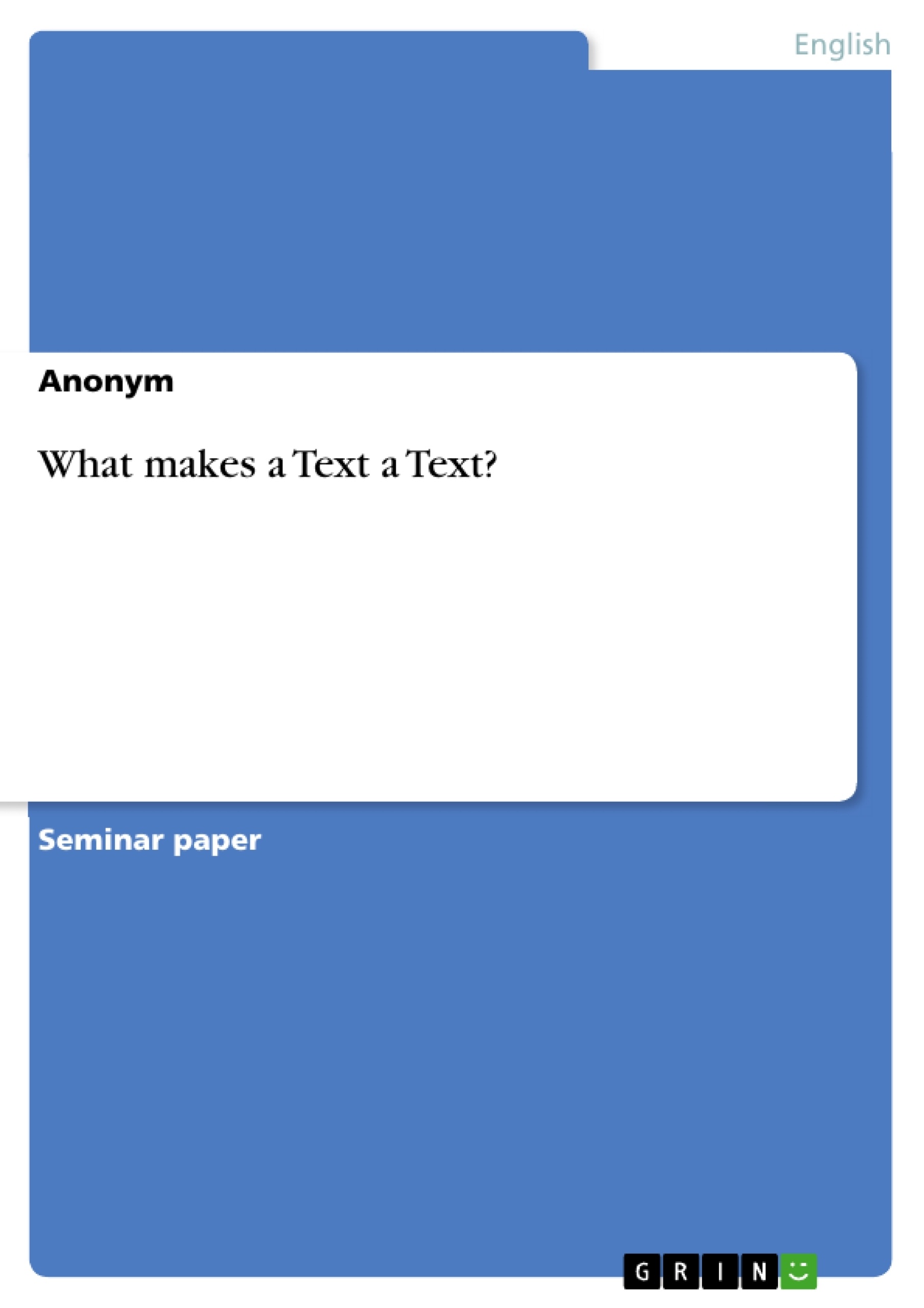The question “What makes a text a text?” is the topic of this assignment.
The definition of text has been discussed extensively among linguists. They have taken different approaches to define what makes a text a text. Although some were similar, no consensus on a definition has been reached yet. The question is particularly interesting in regard to text production. This assignment is therefore of interest to text producers and those who analyse texts. Texts serve the purpose of conveying a message or information. More literally, their purpose is to communicate with the recipient. Thus, to produce meaningful and comprehensible texts, a basic understanding of the criteria for textuality is essential.
This assignment and its results are based on an extensive literature research of books, scientific journals, and the internet. The assignment begins by exploring the definition of “text” and “textuality”. Both concepts are defined, and some linguistic issues are discussed. The work of De Beaugrande and Dressler often serves as a point of reference when discussing this topic. They defined seven criteria for textuality to distinguish texts from non-texts. These criteria are examined and defined in the third section, and examples of each criterion are given. Excerpts are taken from the “I have a dream” speech by Martin Luther King, Jr. The aim is to determine whether this speech can be regarded as a text based on the criteria of De Beaugrande and Dressler. The assignment ends with a critical discussion and conclusion.
Inhaltsverzeichnis (Table of Contents)
- Introduction.
- Definitions of Text and Textuality.
- Text
- Textuality.
- Seven Criteria of Textuality.
- Cohesion
- Coherence
- Intentionality.
- Acceptability.
- Informativity
- Situationality.
- Intertextuality.
- Conclusion
Zielsetzung und Themenschwerpunkte (Objectives and Key Themes)
The primary objective of this assignment is to explore the definition of "text" and establish criteria for determining what constitutes a text. It aims to understand the various perspectives on textuality, particularly emphasizing the contributions of De Beaugrande and Dressler.
- Defining "text" and "textuality" from different linguistic perspectives.
- Exploring the seven criteria of textuality proposed by De Beaugrande and Dressler.
- Analyzing the "I have a dream" speech by Martin Luther King, Jr. to assess its textuality based on the established criteria.
- Discussing the practical implications of understanding textuality for text producers and analysts.
- Providing a comprehensive analysis of the key elements of textuality.
Zusammenfassung der Kapitel (Chapter Summaries)
The introduction establishes the assignment's objective to define "text" and explores the ongoing debate surrounding the concept. It highlights the importance of understanding textuality for effective communication.
The chapter "Definitions of Text and Textuality" examines various linguistic perspectives on defining "text," including the common understanding and the scientific view. It discusses the origin of the word "text" and the role of grammatical and semantic structures in text production. This chapter also explores the different forms a text can take and the shift towards a more communication-oriented view of texts.
Schlüsselwörter (Keywords)
The key focus of this assignment revolves around the definition of "text" and "textuality," exploring the criteria for identifying texts. It examines the work of De Beaugrande and Dressler and their seven criteria for textuality, including cohesion, coherence, intentionality, acceptability, informativity, situationality, and intertextuality.
- Quote paper
- Anonym (Author), 2022, What makes a Text a Text?, Munich, GRIN Verlag, https://www.grin.com/document/1253792



